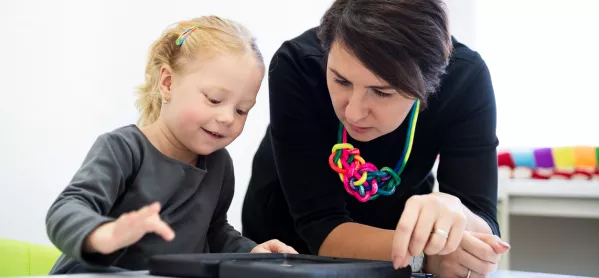I first heard about online learning journals in 2012 and I can well remember the initial scepticism at the idea.
Are they safe? How will teachers be able to interact with the children? What about the quality of observations? Don’t children need to see adults writing?
I admit I was one of those sceptics.
Quick read: EYFS: In praise of the humble sandpit
Quick listen: Why attachment-aware teaching matters for every child
Want to know more? Active learning: make a drama out of teaching punctuation
However, I am so pleased that my curiosity got the better of me, and we decided to explore this new digital method of recording. Learning journals are now a fully embedded tool in our EYFS practice.
We have been happily using Tapestry for quite a few years and we still love it, I would never go back.
As such, I am quite surprised when I come across other teachers who are yet to convert. There is a range of benefits.
Online learning journals: the benefits
Firstly, there is huge potential for powerful parental engagement. Teachers work with a range of different parents from all walks of life. Some parents we know struggle with literacy and are reluctant to fully engage with school.
Tapestry and platforms like it are really accessible for everyone because they offer similar communication features to social media - for example, parents can browse photos and click to ‘like’ an observation.
For the hard-to-reach parents who may not attend parent’s evening, it is really beneficial.
Other parents really do want to know exactly what their child is learning. They can enjoy sharing the photos and observations with children when home. We have found online learning journals also enable parents to feel involved in the learning and it encourages parents to extend the learning into the home environment.
They might see their child had been counting at school and decide to help with practice at home.
For the anxious parent, particularly through the settling in stage, it is also hugely reassuring for them to see a photo of their child happily playing with other children or just smiling on their first day, when the last image they had of them was their child wailing at the door at drop off.
Workload boost
But is it more work for teachers?
The simple answer is no. The biggest selling point for teachers is losing hours and hours of cutting and sticking - I don’t think I need to say anymore! Time can be much better spent.
For teachers in a job-share it also works brilliantly: both can access one another’s observations very easily and keep up to date with the children’s learning. There is no struggle to deliver a pile of books to one another between shifts!
As with any aspect of teaching and learning, each school can fine-tune the way that they work with this kind of tool.
Top tips for learning journals
Over the years I have learnt how to get the best out of the programme. We may not work in the exact same way as other schools, but it works well for us. So here are my top tips.
1. A dead iPad is even more frustrating than not being able to find a pen! Get in the habit of checking and charging the iPad every day at the end of school.
2. Don’t fall into the trap of taking the photo and then writing notes to type up later. You will not benefit from saving yourself time. Always capture in the moment (note-form on the device works best).
3. Ensure the whole team starts with good habits of spending a few minutes checking and editing observations at the end of each school day, rather than leaving them to catch up with weeks later.
4. Avoid having lots of additional workbooks alongside the learning journal. This duplication works against the principle of all the learning being recorded in the same place.
5. Work with SLT to make evidence easily accessible for subject monitoring. Subject specific observations can be downloaded for moderation or staff meetings.
6. You can still review the observations without the need to allocate a judgement to every single observation.
7. Remember the principles of good practice shouldn’t change. Regularly review journals with your team to ensure quality and purpose to the observations.
Helen Pinnington is early years foundation lead at St Thomas More’s Catholic Primary School in Bedhampton, Hampshire





